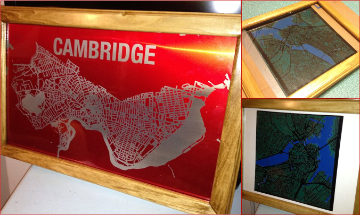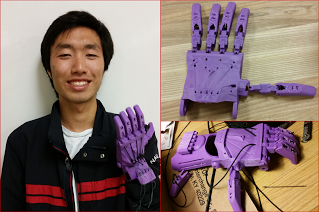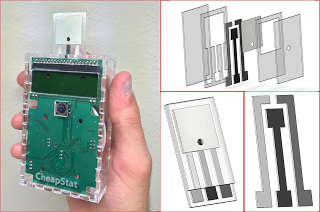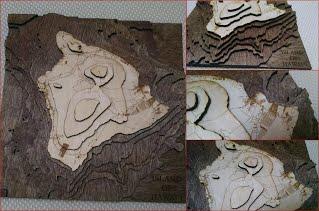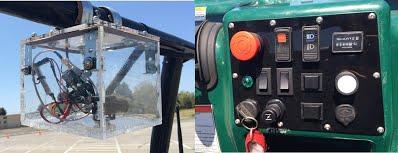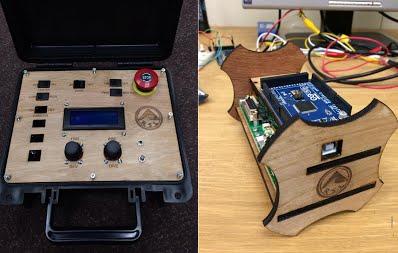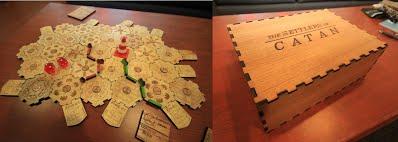To enter or nominate someone as Maker of the Month, submit the following via e-mail to scumakerlab@gmail.com:
- Name
- Year
- List of Maker Lab equipment used
- Brief description of the project (a couple sentences)
- Photo(s) of the project
Previous Makers
Maker Club, IEEE, and ACM hosted a series of Arduino workshops this quarter. Students soldered their own diy arduinos that were machined on the OtherMill. They applied the arduino coding they learned to building a Useless Box. The components of the box were laser cut out of wood. They assembled, the boxes, integrated the servos, switch, and arduino, and programmed the box.
Scot Tomer is building a robot using a variety of equipment in the Maker Lab. Brackets, spacers, and even a stand for testing were designed in SolidWorks and then 3D printed using the MakerBot Replicator 2X. A custom base plate was cut and engraved on the laser cutter. Custom circuit boards were designed and machined on the OtherMill. The robot has been assembled using basic tools from soldering irons to screw drivers. The finished robot will be programmed and replicated for a research project in the Robotic Systems Lab.
Michael Neumann used the Laser Cutter to make maps of Cambridge and Boston. He created two very different styles by using different materials and techniques. For the Cambridge map, he rastered the map on anodized aluminum. For the Boston map, he used three different colored, thin sheets of acrylic to represent the land, water, and roads. He laser cut each sheet then layered them to create the map. He pulled the data to generate the various maps from google.
Kyle Takeuchi 3D printed the individual components for the prosthetic hand using the MakerBot Replicator 2X. The parts were designed and printed to connect together and still have the flexibility to have movement at the joints. Once the hand was assembled, cords were run through the hand allowing the user to extend and contract the fingers.
The laser cutter has been used consistently throughout the arsenic detection project. Initially, the laser cutter was used to cut defined electrode patterns onto paper substrate to be used as stencils for applying the conductive ink. In spring of 2013, a major milestone was achieved be developing a fully enclosed disposable device. This device included several plastic layers with defined holes and chambers, all of which were laser cut in the Maker Lab. The disposable electrodes were also laser cut in order to produce uniform shapes and orientations. The laser cutter has been essential to our production of the enclosed devices and has greatly increased the consistency of our technology device to device.
Nicholas Xydes, graduate student, created a topographic map of the Island of Hawaii out of wood. He collected GIS data on elevation and used Google Maps for the roads. He then created the topographic map showing both elevation in 1000m increments and all roads on the island. The laser cutter was implemented to raster the roads and cut each level to shape. Basic tools were utilized to sand, stain, glue and clamp the layers together.
The RSL Rover Senior design team created parts for their semi-autonomous vehicle using the Laser Cutter in the Maker Lab. They created a clear acrylic housing for a camera and other electronics along with a custom control panel.
Jorge and Killian used the Laser Cutter to raster and vector cut custom designed housing for their electronics and control box panel out of wood. The housing and panel had to be carefully sized in order to fit all of the components and wiring. This was built for their Underwater ROV as part of their Senior Design Project.
Killian used the Laser Cutter to raster and vector cut the game board along with vector cutting the the player pieces out of wood. He used the dual extrusion on the MakerBot to 3D Print the "robber" piece. He hand painted the player pieces and stained the game board. He also used the Laser Cutter to raster and vector cut out a box for storing the game.


